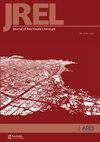城市空间分析研究进展:城市区域的存在、规模与空间组织
Q3 Social Sciences
引用次数: 8
摘要
本文综述了城市空间分析的现状;过去四十年我们学到了什么,还有什么有趣的问题。本文涵盖三个主题:城市区域存在的原因、城市区域的空间组织及其规模。自经济显著增长以来,城市地区在200-300年间一直是大多数经济增长的所在地。因果关系不仅是双向的,而且在经济增长和城市增长之间也是最根本的决定因素的因果关系。当然,不仅在欧洲,而且在北非、西亚、印度、中国和中南美洲,国防和贸易城市早在工业革命之前就已经出现了。所有伟大的经济学家都曾对城市地区进行过推测,不仅包括斯密(1776年)和其他当时参与创建城市地区的人,还包括19世纪的冯·图南(1866年)和马歇尔(1890年),以及20世纪上半叶的一大批伟大经济学家,最著名的是胡佛(1948年)和洛施(1954年)。从20世纪中期克拉克(1951)开始,城市分析师开始从地理学和区域科学以及经济学的背景中增加。这篇论文主要是关于城市空间分析的,这个主题的诞生是与阿隆索(1964)随意放置的。本文无意追溯城市空间分析的发展历程。对于这一目的,以及重要的原始分析,最好的来源是:Fujita (1989), Fujita, Krugman和Venables(1999)以及Fujita和Thisse(2002)。这些作品给这个主题带来了显著的统一性。相反,本文试图描述城市空间分析的现状:在过去的40年里,我们学到了什么,还有什么有趣的问题。这篇论文只包含零星的和不充分的有关文献参考。具体来说,本文回顾了三个主题:城市区域存在的原因、城市区域的空间组织和城市区域的规模。为什么是市区?这个问题就像城市经济学中的任何问题一样容易理解。抽象分析从一个没有特征的平原开始,有任意数量的生产部门,它们都具有恒定的回报生产函数,以及任意数量的提供劳动力且具有良好的效用和需求函数的家庭。家庭并不看重与其他家庭的接近程度,比如说出于社会原因。那么,如果人员和货物的运输需要有价值的投入,那么在竞争均衡中就不存在有价值的投入。家庭将均匀分布在平原上,每个家庭的商品和服务将在住所附近的小区域内生产。没有交通工具,也没有市区。这个结果用星号表示。(1978),但在Mills(1971)中被陈述为城市建模的前奏。当然,所有的经济活动都受规模(和或范围)经济的影响,在小的生产速度下,在某些情况下,大的生产速度。由此可见,生产是在离散的地点大规模进行的。在单位成本曲线向下倾斜的部分,自由进入导致利润和产量为零。每个公司都是垄断生产者的区域要么是一个六边形,要么是一个棱角被削去的六边形,可能是一个圆形作为极限情况(见Mills和Lav, 1966)。员工和客户的住所都集中在每个生产基地附近,以节省运输成本。如果在住房生产中没有资本-土地替代,土地价值和租金在生产地点达到峰值,并随着距离而线性下降,如果替代是可能的,则呈凸形[见Fujita和Thisse(2002),第3章和第4章]。从具有规模经济和范围经济的公司购买投入或向其出售产出的公司也位于邻近地区,即使它们可能只有较小的这种经济。…本文章由计算机程序翻译,如有差异,请以英文原文为准。
Progress in Urban Spatial Analysis: Existence, Sizes and Spatial Organization of Urban Areas
Abstract This article is a survey of the current state of urban spatial analysis; what has been learned in the past forty years and what interesting problems remain. Three topics are covered-reasons for the existence of urban areas, spatial organization of urban areas and their sizes. Introduction Urban areas have been the locus of most economic growth during the 200-300 years since there has been significant economic growth. Causation runs not only both ways but also between economic and urban growth as cause and effect of the most fundamental determinants of each. Of course, cities for defense and trade long predated the industrial revolution, not only in Europe but also in North Africa, West Asia, India, China and Central and South America. All great economists have speculated about urban areas, including not only Smith (1776), and others who were present at the creation, but also von Thunen (1866) and Marshall (1890) in the nineteenth century and a host of greats in the first half of the twentieth century, most notably Hoover (1948) and Losch (1954). Starting just after the mid twentieth century with Clark (1951), urban analysts began to multiply from backgrounds in geography and regional science, as well as economics. This paper is mostly about urban spatial analysis and the birth of that subject is arbitrarily placed with Alonso (1964). This paper is not intended to trace the development of urban spatial analysis. The best sources for that purpose, as well as for important original analysis, are: Fujita (1989), Fujita, Krugman and Venables (1999) and Fujita and Thisse (2002). These works have brought remarkable unity to the subject. Instead, this paper tries to describe the current state of urban spatial analysis: what has been learned during the last forty years and what interesting problems remain. The paper contains only scattered and inadequate references to the relevant literature. Specifically, this paper reviews three subjects: reasons for the existence of urban areas, their spatial organizations and their sizes. Why Urban Areas? This issue is about as well understood as any issue in urban economics. Abstract analysis starts with a featureless plain, any number of production sectors, all of which have constant returns production functions, and any number of households that supply labor and have well-behaved utility and demand functions. Households do not value proximity to other households, say for social reasons. Then if transportation of people and goods requires valuable inputs, there would be none in competitive equilibrium. Households would be uniformly distributed on the plain and each household's goods and services would be produced in a small area near the dwelling. There would be no transportation and no urban areas. This result was formalized in Starred. (1978), but was stated in Mills (1971), as a prelude to urban modeling. Of course, all economic activity is subject to scale (and or scope) economies at small, and in some cases large, rates of production. It follows that production takes place at substantial scale at discrete locations. Free entry leads to zero profit and production on the downward sloping part of the unit cost curve. The area within which each firm is a monopoly producer is either a hexagon or a hexagon with the corners shaved off, possibly a circle as a limiting case (see Mills and Lav, 1966). Employees' and customers' residences congregate near each production site in order to economize on transportation costs. Land values and rents peak at production sites and decrease linearly with distance from them if there is no capital-land substitution in housing production and with convex shape if substitution is possible [see Fujita and Thisse (2002), Chapters 3 and 4]. Firms that buy inputs from or sell outputs to firms with scale and scope economies also locate in adjacent areas even though they may have only minor such economics. …
求助全文
通过发布文献求助,成功后即可免费获取论文全文。
去求助
来源期刊

Journal of Real Estate Literature
Economics, Econometrics and Finance-Economics, Econometrics and Finance (miscellaneous)
CiteScore
0.90
自引率
0.00%
发文量
6
期刊介绍:
The Journal of Real Estate Literature (JREL) is a publication of the American Real Estate Society (ARES). This journal offers a comprehensive source of information about real estate research and encourages research and education in industry and academia. The scope of the journal goes beyond that of traditional literature journals that only list published research. This journal also includes working papers, dissertations, book reviews and articles on literature reviews on specialized topics, real estate information technology and international real estate.
 求助内容:
求助内容: 应助结果提醒方式:
应助结果提醒方式:


